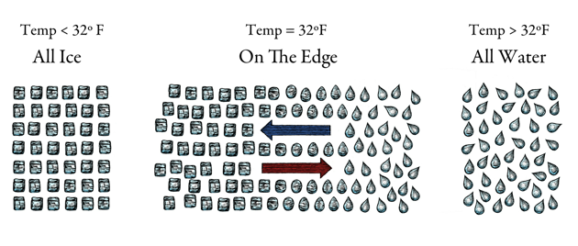Innovation Follows Culture Follows Structure – Innovation Excellence

Once in a while you run into ideas which are refreshingly thought-provoking, while at the same time seeming to be resonating with your own view. This holds for the key statements in “Loonshots: How to Nurture the Crazy Ideas That Win Wars, Cure Diseases, and Transform Industries”, a worthwile new book by theoretical physicist and entrepreneur Safi Bahcall. Since its launch, “Loonshots” has been recommended by Bill Gates and Daniel Kahneman and frequently been featured or awarded by the Wall Street Journal, Newsweek, Nature, Scientific American, Forbes, Bloomberg, FT, HBR and others.
Countering a famous saying, Safi Bahcall suggests: Culture eats strategy for breakfast. Structure eats culture for lunch. What does he exactly mean by that? Bahcall explains:
To understand what I mean by structure vs. culture, let’s start with what seems like an odd paradox: Take 100 people each of whom individually might be excited about some wild, crazy idea that could transform their industry. Organize them into a group with a mission, and a reward system tied to that mission, and they will reject that same idea. Why? Why would the same people who individually support an idea, collectively reject an idea? Let’s consider something often overlooked in the thousands of books on culture: their incentives. (…) It may appear that the ‘culture’ has changed: from a four-person team in which everyone rolled up their sleeves to nurture some wild idea, to a 100-person group riddled with politics. But underlying that change in culture is a shift in incentives. In other words, structure drives culture.
A related idea introduced by Bahcall is the application of the physical notion phase transition in the context of corporate innovation. Given my own background as physicist (a soulmate of mine, if you will), this is admittedly quite appealing to me. The line of thought starts off by considering organizations as complex systems. Safi Bahcall elaborates further:
A key feature we wish to understand in any complex system is the sudden change between two types of emergent behaviors. That sudden snap is known as a phase transition. Water, for example, will suddenly change from liquid to solid. Highways will suddenly change from smooth flow to jammed flow. Why? Systems snap when the tide turns in a microscopic tug-of-war. Binding energy ties to lock water molecules into rigid formation. Entropy encourages those molecules to roam. As temperature decreases, binding forces get relatively stronger and entropy forces get relatively weaker. When the strengths of those two forces cross, the system snaps. Water freezes. All phase transitions are the result of two competing forces, like the tug-of-war between binding energy and entropy in water. And that’s how we can begin to apply these ideas to teams and companies: when people organize into any kind of group with a mission, and a reward system tied to that mission, they also create two competing forces – two forms of incentives.
From: Safi Bahcall, “Loonshots: How to Nurture the Crazy Ideas That Win Wars, Cure Diseases, and Transform Industries” (2019)
Phase transitions turn out characteristic for complex systems. They exhibit some interesting features:
The preceding thoughts tie in with our proposed Dual Innovation approach (see visual below). Key principles thereof are:
Particularly, in the course of ‘Scaling-Up’, i.e. the transition of validated concepts into an established business (Safi Bahcall: transfer), key parameters along the different operating model dimensions are to be shifted in order to obtain a change in the dedicated corporate environment from ‘Explore’ to ‘Exploit’. This corresponds well with Bahcall’s above ideas of identifying and shifting control parameters (e.g. incentivization) with the aim of transitioning between distinct system phases and their emerging characteristics (e.g. culture).
Establishing and effectively managing an organizational interface between separated ‘Explore’ and ‘Exploit’ systems proves pivotal to corporate innovation success. This is the Innovation Playing Field we call ‘Reshape the Core’. A fundamental aim of corporate innovation leadership encompasses
Bottom line: Integrating explorative innovation activities and core business might pose in large part a structural issue as collective behavior and culture of organizations (as complex systems) tend to be significantly determined by structural system factors. Or briefly put: Innovation follows culture follows structure.
Wait! Before you go…
 Dr. Ralph-Christian Ohr is an Integrative Innovation advisor with extensive experience in senior management functions for international and national companies based in Switzerland. His particular interest is aimed at organizational and personal capabilities for high innovation performance. Follow him on Twitter @ralph_ohr
Dr. Ralph-Christian Ohr is an Integrative Innovation advisor with extensive experience in senior management functions for international and national companies based in Switzerland. His particular interest is aimed at organizational and personal capabilities for high innovation performance. Follow him on Twitter @ralph_ohr
